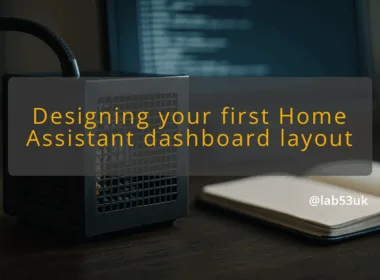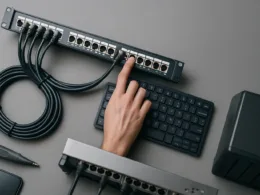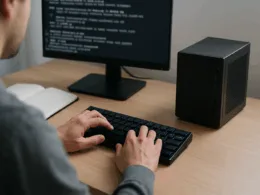Crafting Effective Automation Scenes for Your Home Lab
I build automation scenes in my home lab the same way I fix a stubborn server: small steps, repeatable checks, and a clear rollback. Scenes are not flashy tricks. They are repeatable configurations that make daily life cheaper, quieter and less fiddly. This guide shows how I design, configure and troubleshoot automation scenes so they survive change and stay useful.
Design automation scenes for reliability and clarity
Start with the user story. Not the marketing nonsense. A simple sentence will do. For example: “When I arrive home after dark, set the hallway light to 40%, power the NAS out of low-power mode and start the living-room media server.” That single line gives me triggers, devices and the desired end state.
Pick a scope. A scene should do one coherent thing. If a single event toggles a light, a heater and a dozen logs, it is harder to reason about. I keep scenes narrowly focused. If multiple actions are required, chain them with simple automations that call scenes.
Define state, not steps. Scenes describe the final state: which lights on, which switches off, which services running. Avoid encoding long imperative sequences unless order matters. For example, if a NAS must finish a spin-up before shares mount, add a short wait. Otherwise set the target state only.
Choose triggers deliberately. Common triggers are geolocation, schedules, webhooks or device events. For my Home Lab I favour explicit triggers I can test quickly: a phone entering a zone, an MQTT message, or a manual button press on a cheap Zigbee device. Keep triggers observable so I can confirm they fired.
Name things sensibly. Use predictable prefixes. I use scene.hallwayarrival, scene.nasactive. Clear names save time when editing configuration and when debugging.
Concrete example (conceptual):
- Trigger: device_tracker.phone enters zone.home after sunset.
- Scene: hallwaylight = 40%, NAS = active, mediaserver = started.
- Conditions: only when no ongoing maintenance window, and when not in Do Not Disturb.
Configuration tip. Store scenes and automations as code. I keep them in a git repo. Each change is a commit. If a scene breaks, I can roll back in seconds. Use templates for repeated patterns. If your platform supports templating (for example YAML templates), make use of them to avoid copy-paste errors.
Security and access. Scenes can start services. Treat scene triggers like small automation privileges. Avoid exposing webhooks without authentication. If a scene can power devices that affect infrastructure, limit who can trigger it.
Small checklist before enabling a scene:
- Can I trigger it manually for a test?
- Does it depend on other automations or external services?
- Is there a safe fail state if a device fails?
- Is the naming clear in logs?
Build, test and troubleshoot automation scenes
Build incrementally. I add one device at a time and test. Start by writing the scene that sets the light. Test it. Add the NAS state. Test again. This prevents surprise interactions.
Testing strategy:
- Manual trigger. Most platforms allow a run/test button. Use it.
- Simulate failure. Turn off a dependent device and observe the scene. Does it error gracefully?
- Log everything. Increase log verbosity while testing so you can see what fired and why.
- Use a staged rollout. Enable the scene during low-risk hours first.
When something breaks, follow a simple troubleshooting flow. I run these steps in order:
- Confirm trigger fired. Check the tracker or event that should have started the scene.
- Confirm conditions. Was the time window, maintenance flag or other condition blocking execution?
- Check action responses. Did the device accept the command or return an error?
- Inspect logs. Look for timeouts or refused connections.
- Reproduce manually. If the automated trigger is flaky, run the scene manually to isolate the issue.
Specific examples of common failures and fixes:
- Device not responding: Check mesh and signal strength for Zigbee/Z-Wave. A reboot of the offending dongle sometimes fixes radios.
- Service fails to start: Look at the service logs on the host. For example, a media server may report missing mounts. Ensure NAS is available and mounts happen before service start.
- Race conditions: Insert a short wait or verify state in a loop. For instance, wait for NAS to report “ready” before starting media services.
Configuration best practices that reduce troubleshooting:
- Use retries for flaky actions. A single command failure should not break the entire scene.
- Add idempotence. Scenes that set a target state are easier to rerun.
- Centralise secrets. Keep API keys and credentials in a protected file or vault rather than embedded in scene files.
- Use split configurations. Keep scenes in one file and automations that call them in another. That separation clarifies responsibility.
Performance and observability. Log a simple status report at the end of a complex scene: “scene.nas_active completed, 3 actions succeeded, 1 retried”. That makes post-mortem quick. I also emit MQTT or HTTP status so external monitors can alert when scenes fail repeatedly.
Configuration snippet idea (conceptual YAML):
1) Scene file: lists desired states.
2) Automation file: defines trigger, conditions, then calls scene.
3) Script or sequence: used when order matters or retries are needed.
Final checks before leaving a scene live:
- Run the scene from three different triggers if applicable (manual, scheduled, and event).
- Review recent changes in git diff. If something odd appears, revert and test smaller change.
- Annotate commits with the reason and the expected behaviour.
Takeaways
Keep scenes small, state-focused and testable. Name things clearly. Use code and version control. Test incrementally and log outcomes. When troubleshooting, confirm trigger, verify conditions, and inspect device/service responses. Those steps save hours and stop me tearing apart unrelated parts of my home lab for a single broken scene.









